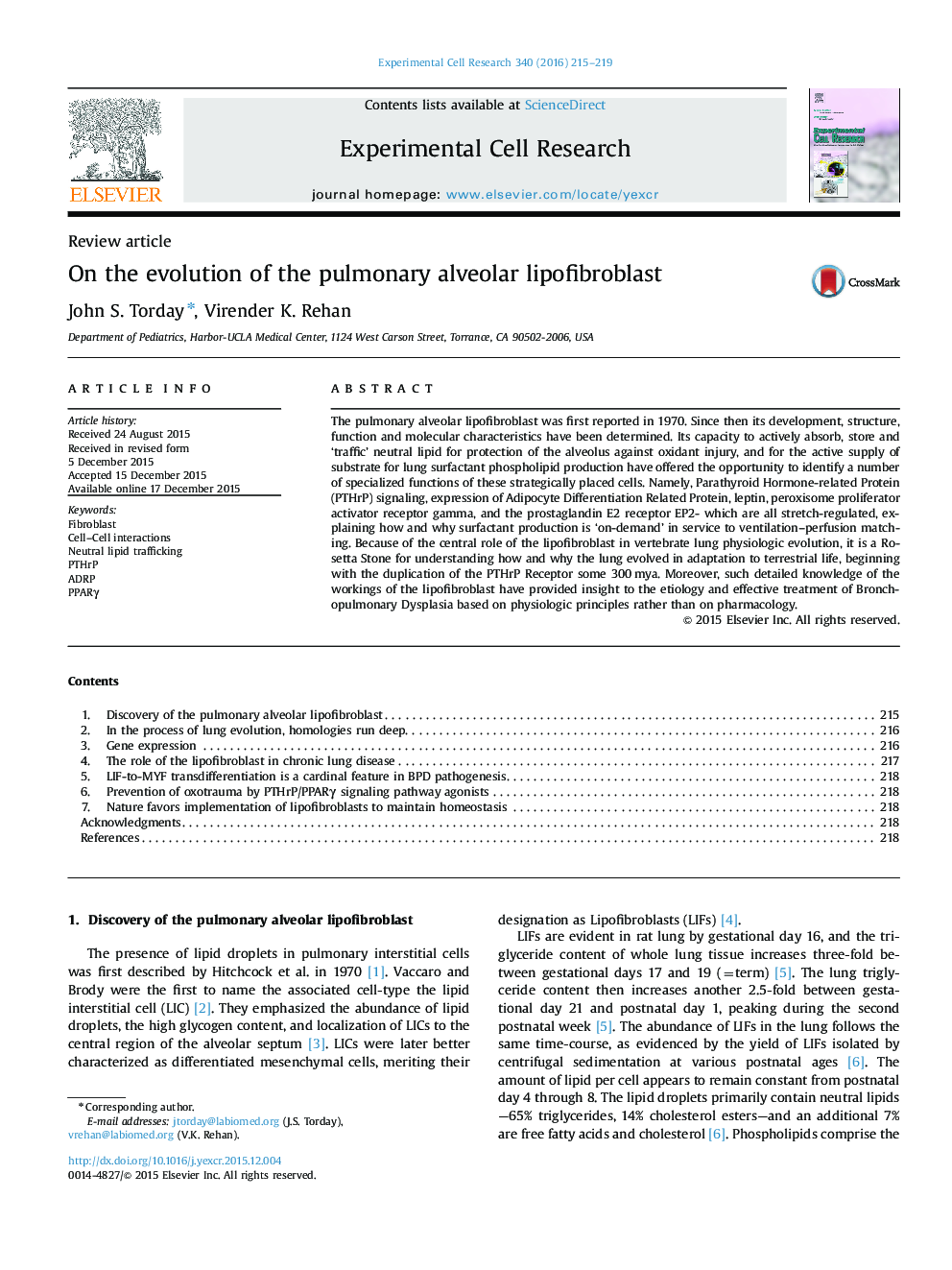| Article ID | Journal | Published Year | Pages | File Type |
|---|---|---|---|---|
| 8452311 | Experimental Cell Research | 2016 | 5 Pages |
Abstract
The pulmonary alveolar lipofibroblast was first reported in 1970. Since then its development, structure, function and molecular characteristics have been determined. Its capacity to actively absorb, store and 'traffic' neutral lipid for protection of the alveolus against oxidant injury, and for the active supply of substrate for lung surfactant phospholipid production have offered the opportunity to identify a number of specialized functions of these strategically placed cells. Namely, Parathyroid Hormone-related Protein (PTHrP) signaling, expression of Adipocyte Differentiation Related Protein, leptin, peroxisome proliferator activator receptor gamma, and the prostaglandin E2 receptor EP2- which are all stretch-regulated, explaining how and why surfactant production is 'on-demand' in service to ventilation-perfusion matching. Because of the central role of the lipofibroblast in vertebrate lung physiologic evolution, it is a Rosetta Stone for understanding how and why the lung evolved in adaptation to terrestrial life, beginning with the duplication of the PTHrP Receptor some 300Â mya. Moreover, such detailed knowledge of the workings of the lipofibroblast have provided insight to the etiology and effective treatment of Bronchopulmonary Dysplasia based on physiologic principles rather than on pharmacology.
Related Topics
Life Sciences
Biochemistry, Genetics and Molecular Biology
Cancer Research
Authors
John S. Torday, Virender K. Rehan,
